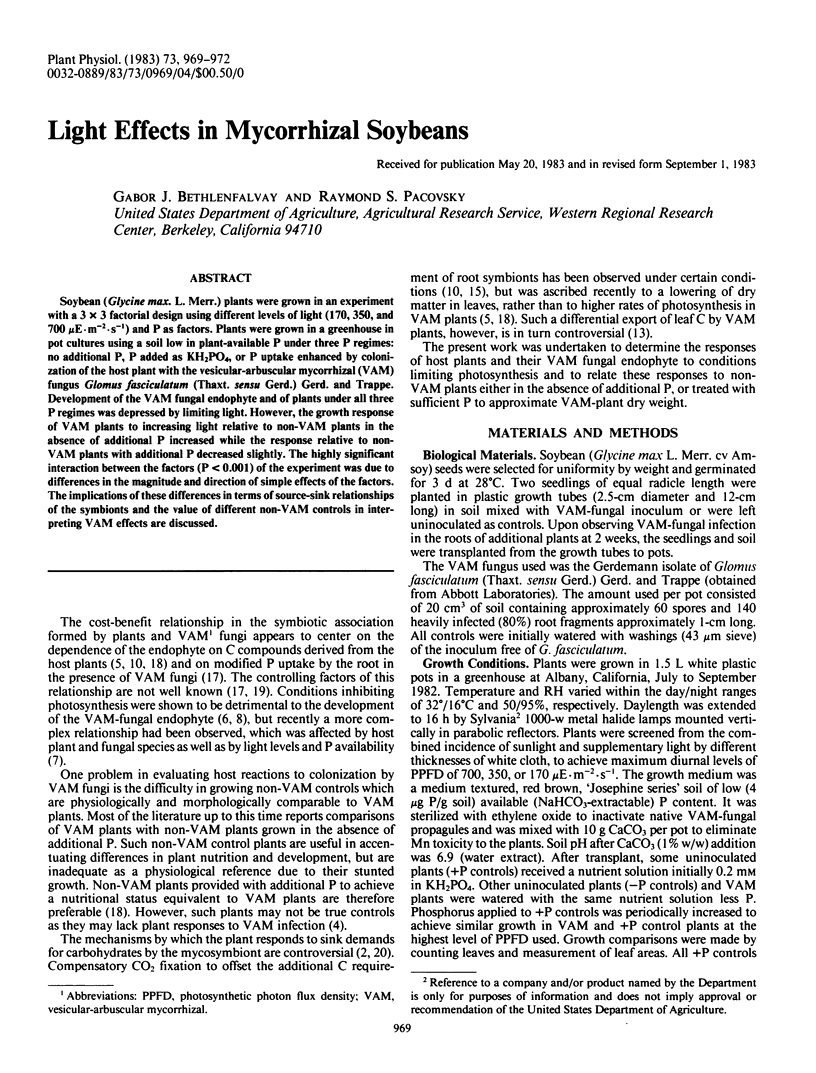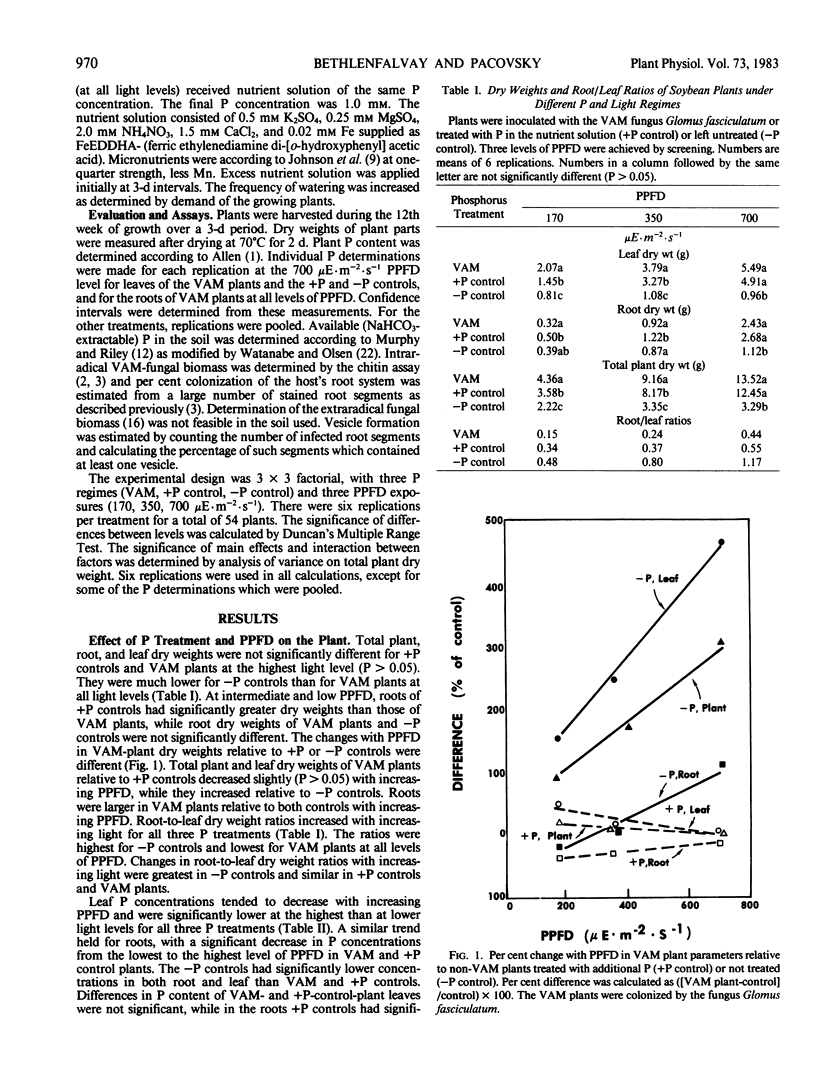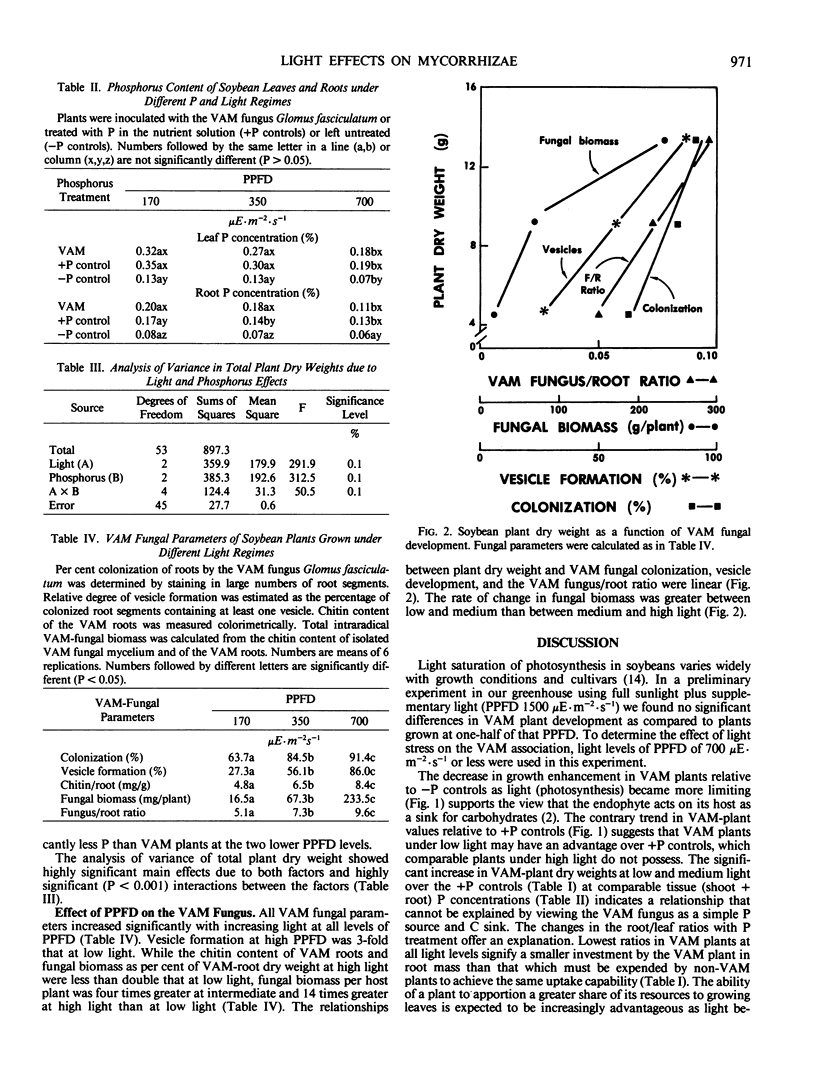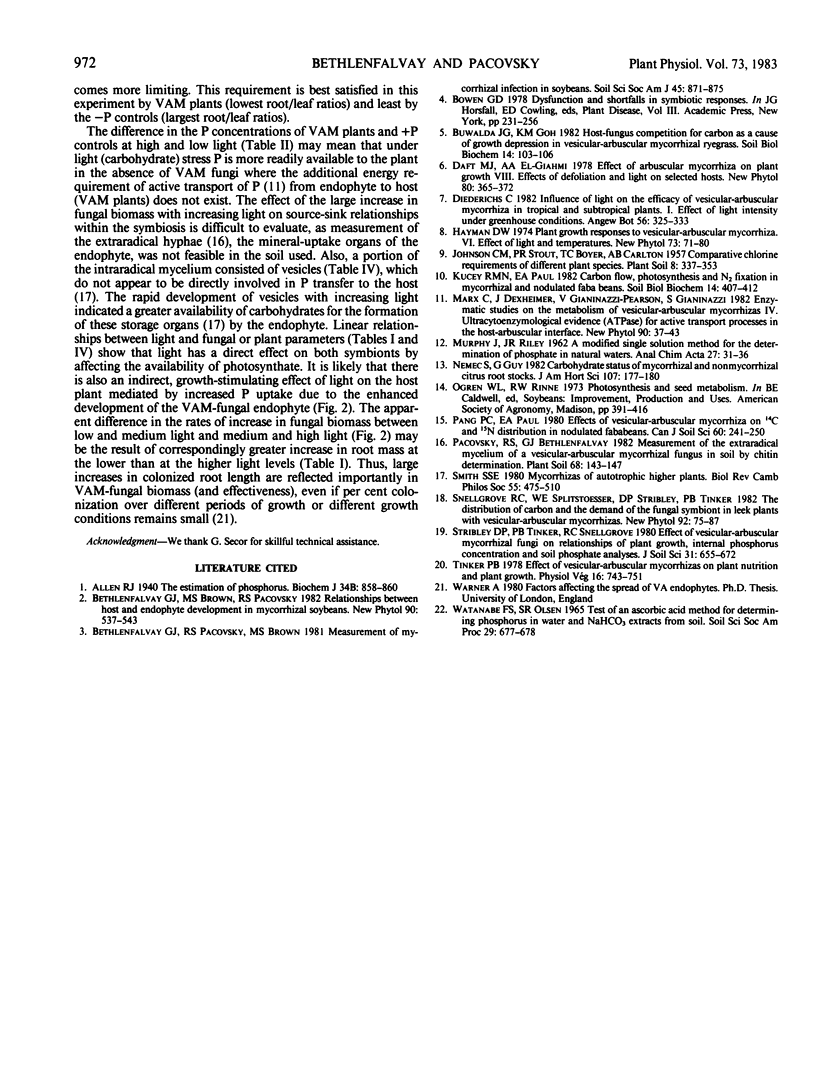Abstract
Soybean (Glycine max. L. Merr.) plants were grown in an experiment with a 3 × 3 factorial design using different levels of light (170, 350, and 700 μE·m−2·s−1) and P as factors. Plants were grown in a greenhouse in pot cultures using a soil low in plant-available P under three P regimes: no additional P, P added as KH2PO4, or P uptake enhanced by colonization of the host plant with the vesicular-arbuscular mycorrhizal (VAM) fungus Glomus fasciculatum (Thaxt. sensu Gerd.) Gerd. and Trappe. Development of the VAM fungal endophyte and of plants under all three P regimes was depressed by limiting light. However, the growth response of VAM plants to increasing light relative to non-VAM plants in the absence of additional P increased while the response relative to non-VAM plants with additional P decreased slightly. The highly significant interaction between the factors (P < 0.001) of the experiment was due to differences in the magnitude and direction of simple effects of the factors. The implications of these differences in terms of source-sink relationships of the symbionts and the value of different non-VAM controls in interpreting VAM effects are discussed.
Full text
PDF



Selected References
These references are in PubMed. This may not be the complete list of references from this article.
- Allen R. J. The estimation of phosphorus. Biochem J. 1940 Jun;34(6):858–865. doi: 10.1042/bj0340858. [DOI] [PMC free article] [PubMed] [Google Scholar]


